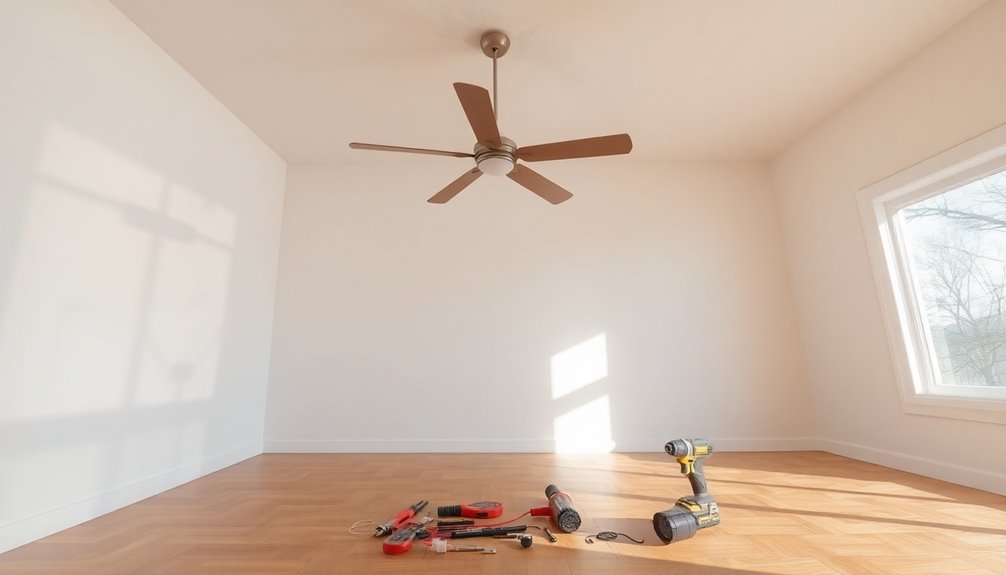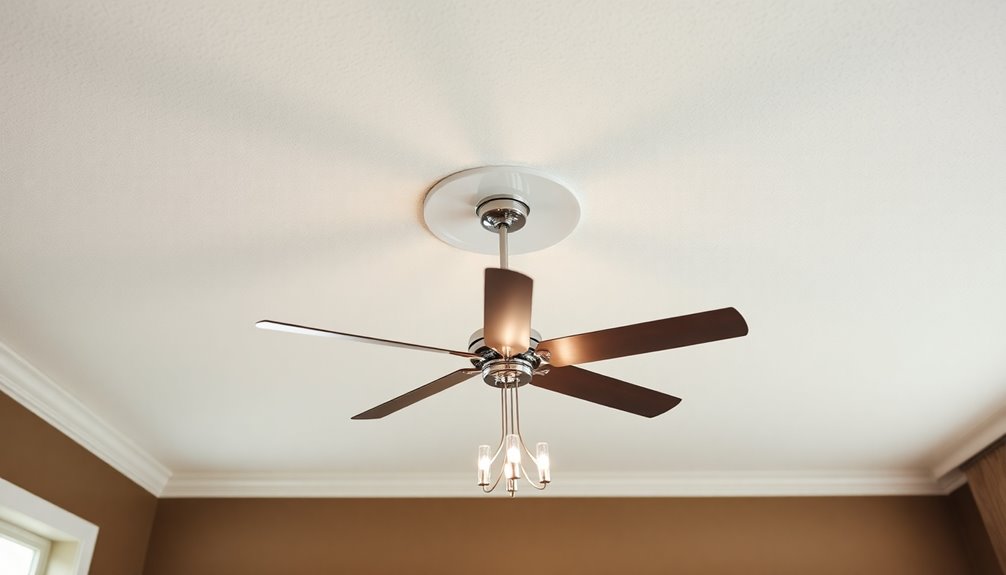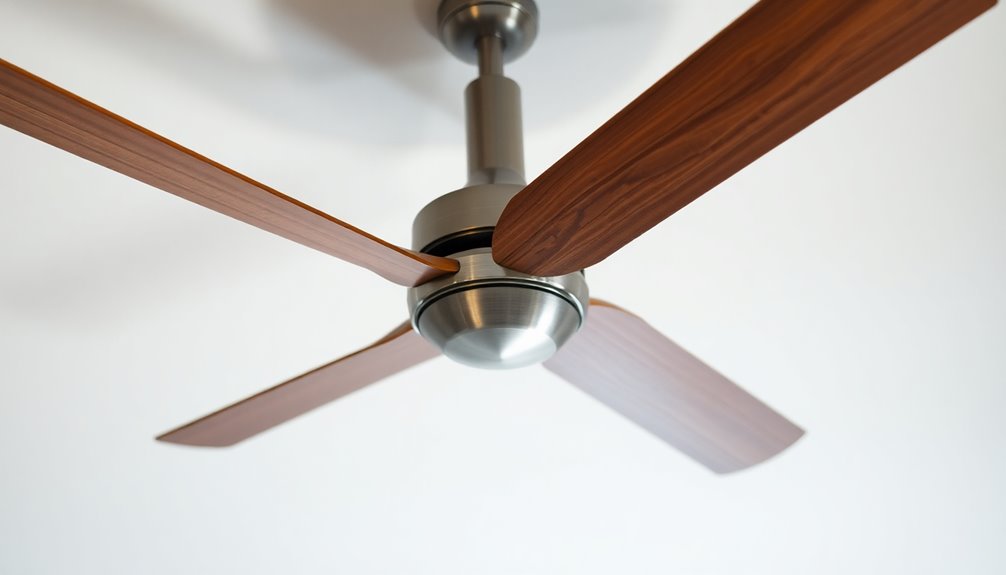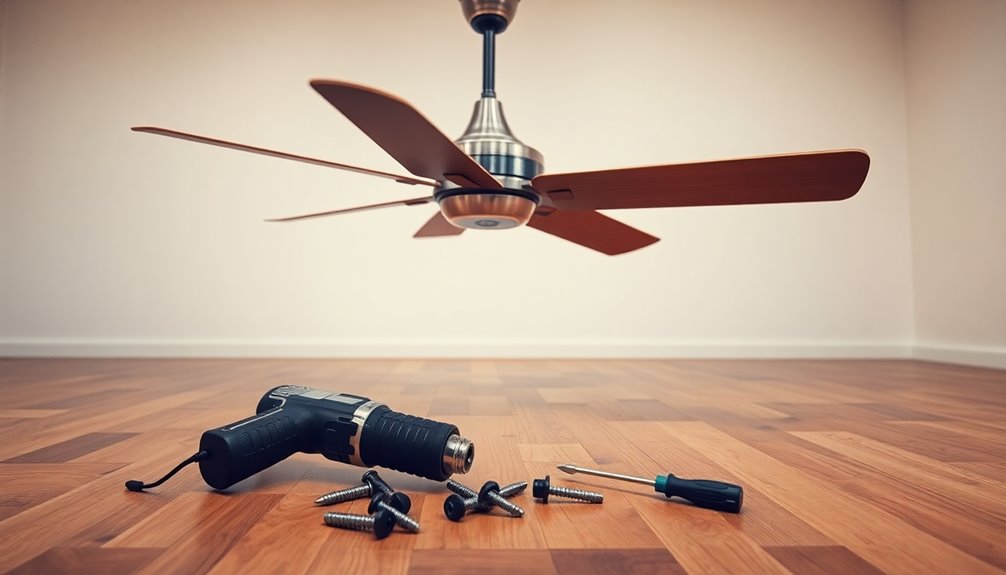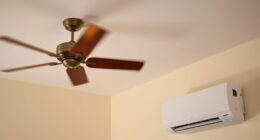Installing a ceiling fan without existing wiring usually costs between $350 and $2,000. The price varies based on factors like the complexity of the installation, labor charges, and materials needed. If you choose to hire a professional electrician, their rates typically run from $50 to $100 per hour. However, if you're confident in your skills, a DIY approach can save you on labor costs, though it requires a solid understanding of electrical work. Each decision affects your total costs, so keep exploring your options for more insights on ceiling fan installations and potential savings.
Key Takeaways
- Installation costs without existing wiring typically range from $350 to $2,000, depending on various factors.
- Additional expenses may arise from new wiring, ceiling fan-rated boxes, or circuit breakers.
- Electrician labor rates generally range from $50 to $100 per hour, impacting total installation costs.
- Complexity of installation and ceiling height can influence labor costs and time required.
- Hiring a licensed electrician is recommended for safety and compliance with local codes.
Installation Process Overview

When you're ready to install a ceiling fan, the first step is to choose the right location for it, guaranteeing it's both functional and aesthetically pleasing. This involves using a stud finder to locate joists, which will provide the necessary support for your ceiling fan.
If you don't have existing wiring, you'll need to plan for new electrical work, which can add complexity to the installation process.
Before you start, make sure to turn off electricity at the circuit breaker to prioritize safety during the wiring process. You'll need to install a ceiling fan box that's rated for weight and motion, adhering to local electrical codes for secure support.
Hiring a licensed electrician is highly recommended for installations that require new electrical circuits. They'll guarantee compliance with safety regulations and proper functionality.
The installation process may seem intimidating, but with the right preparation and professional help, you can achieve a successful ceiling fan installation that enhances your space.
Cost Factors to Consider

Before you plunge into your ceiling fan installation, it's important to understand the various cost factors that can influence your budget.
The cost to install a ceiling fan without existing wiring can range from $350 to $2,000, depending on the installation complexity and local labor rates. If new wiring, a ceiling fan-rated box, or circuit breakers are required, you can expect the ceiling fan installation cost to increase considerably. Additionally, having a HEPA filtration system in place can help maintain air quality during the installation process, especially if dust and debris are generated.
Labor costs play a vital role in the overall expense. Electrician costs typically range from $50 to $100 per hour, which can add up if extensive wiring is necessary.
Additionally, your ceiling height and the accessibility of the installation site can affect labor costs, as more time and equipment might be needed for challenging installations.
Don't forget to take into account materials cost, as you'll likely need wiring, junction boxes, and other electrical components, which can contribute an additional $50 to $200 to your total. Furthermore, investing in a top-rated cordless vacuum can help keep your space clean after the installation process, ensuring no dust or debris is left behind.
DIY vs. Professional Installation

Deciding between DIY and professional installation for your ceiling fan can greatly impact your project's outcome and budget. While a DIY approach can save you on labor costs, it requires a solid understanding of electrical systems and may extend your installation time considerably, especially if you're inexperienced.
Here's a quick comparison to help you decide:
| Factor | DIY Installation | Professional Installation |
|---|---|---|
| Cost | Lower (saves on labor) | Higher (typically $150/hour + materials) |
| Complexity | May take longer for inexperienced | Usually faster and compliant |
| Safety Hazards | Risk of errors without proper knowledge | Licensed electricians guarantee safety |
If you're considering complex installations without existing wiring, hiring a professional electrician is highly recommended. Their expertise can prevent safety hazards and guarantee that your fan is properly supported. While installation costs vary, investing in a licensed electrician might save you headaches down the line. Remember, fan installation costs can range from $350 to $2,000, so weigh your options carefully before diving in.
Types of Ceiling Fans

Ceiling fans come in a variety of styles and types, each designed to meet specific needs and preferences. Understanding the different types of ceiling fans can help you choose the right one for your space, especially if you're considering installation without existing wiring.
Here are three popular types of ceiling fans:
- Standard Ceiling Fans: Commonly used in residential settings, these fans typically cost between $50 and $300. They're versatile and come in various designs, and emotional alignment in your home environment can enhance your overall well-being. Additionally, opting for a fan with a HEPA filter technology can contribute to better indoor air quality.
- Smart Ceiling Fans: If you're tech-savvy, smart ceiling fans that can be controlled via smartphone apps might be for you. These range from $120 to over $1,000, depending on features and design.
- Flush Mount Fans: Ideal for low ceilings, flush mount fans also cost between $50 and $300. They provide functionality without sacrificing headroom.
Other options include Energy Star-rated ceiling fans, known for being 60% more efficient than standard models, and outdoor ceiling fans designed to withstand various weather conditions, typically priced between $200 and $400. Additionally, selecting the best airflow ceiling fans ensures optimal cooling and comfort in your space.
Knowing the types of ceiling fans and their costs will aid you in making an informed decision while planning your installation.
Maintenance and Troubleshooting Tips

Once you've chosen the right ceiling fan for your space, it's important to focus on maintenance and troubleshooting to guarantee it operates efficiently and lasts for years.
Start by regularly cleaning the fan blades to prevent dust buildup. This not only improves airflow but can also boost efficiency by up to 60% with Energy Star-rated fans.
During your maintenance checks, inspect for loose screws and connections. Tightening these can help avoid operational issues and extend the fan's lifespan. If your ceiling fan is wobbling, check the blade alignment and verify all screws are secure.
For troubleshooting, if the fan isn't working, verify the power supply first. Make sure the wiring connections—black for hot, white for neutral, and green for ground—are properly secured.
If your fan makes noise, it may need lubrication or mightn't be securely mounted. Address these issues early on to prevent costly repairs later. Additionally, be aware that a clicking noise can indicate mechanical failure, so it's crucial to address it promptly to ensure safety.
Frequently Asked Questions
How Much Does It Cost to Install a Ceiling Fan When No Ceiling Light Exists?
When you're looking to install a ceiling fan where no ceiling light exists, expect to pay anywhere from $350 to $2,000.
The average cost usually lands around $1,000, which factors in materials and labor.
Since you'll need an electrician, labor costs can start at $150 for the first hour, adding up depending on how complex your installation is.
It could take two to five hours, influencing your overall expenses considerably.
Can You Install a Ceiling Fan Without Existing Wiring?
Did you know that nearly 50% of homes in the U.S. don't have ceiling fans installed?
You can install a ceiling fan without existing wiring, but it's a bit complex. You'll need to run new electrical wiring from your circuit breaker to the fan location, which typically requires hiring a licensed electrician.
They'll guarantee everything meets safety codes while installing a ceiling fan-rated box to support the fan's weight and motion.
How Much Does Home Depot Charge to Install a Fan?
When you're looking to install a ceiling fan, Home Depot typically charges between $145 and $355.
The final cost depends on the job's complexity and local labor rates. During a consultation, they'll assess your installation site and give you a more precise estimate.
Don't forget to take into account additional costs for accessories like remote controls or downrods, which can add an extra $30 to $100 to your total.
How Long Does It Take an Electrician to Install a Ceiling Fan?
When you hire an electrician to install a ceiling fan, it usually takes about 2 to 4 hours.
This timeframe can vary based on the complexity of the installation and your ceiling height. If the electrician faces obstacles like ductwork or beams, it might take longer.
They'll also need extra time for safety checks and ensuring everything meets local electrical codes.
Conclusion
To sum up, installing a ceiling fan without existing wiring can be a worthwhile investment, but it's crucial to weigh your options carefully. Remember, "a stitch in time saves nine"—taking the time to plan your installation can save you headaches later on. Whether you choose to tackle it yourself or hire a professional, enjoy the cool breeze and energy savings that come with your new ceiling fan!
